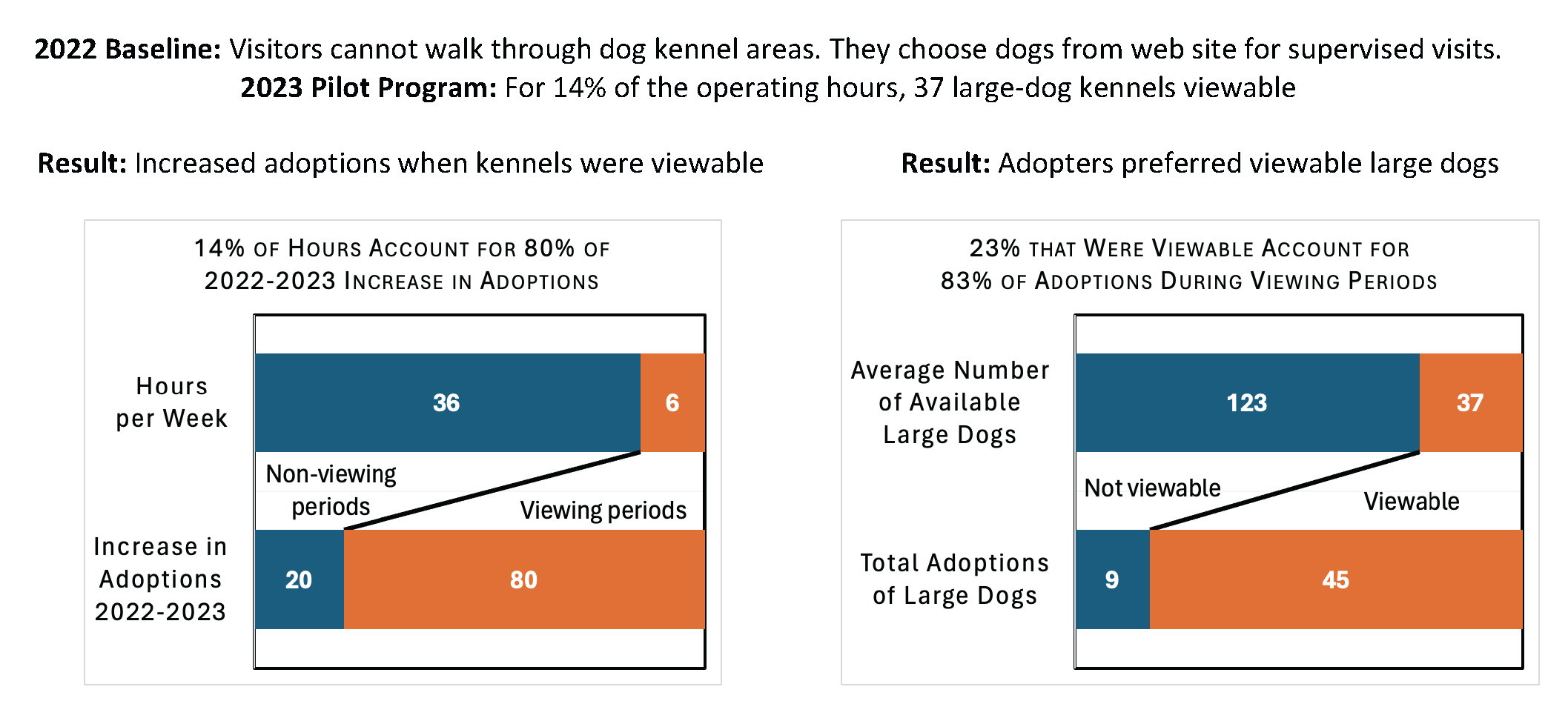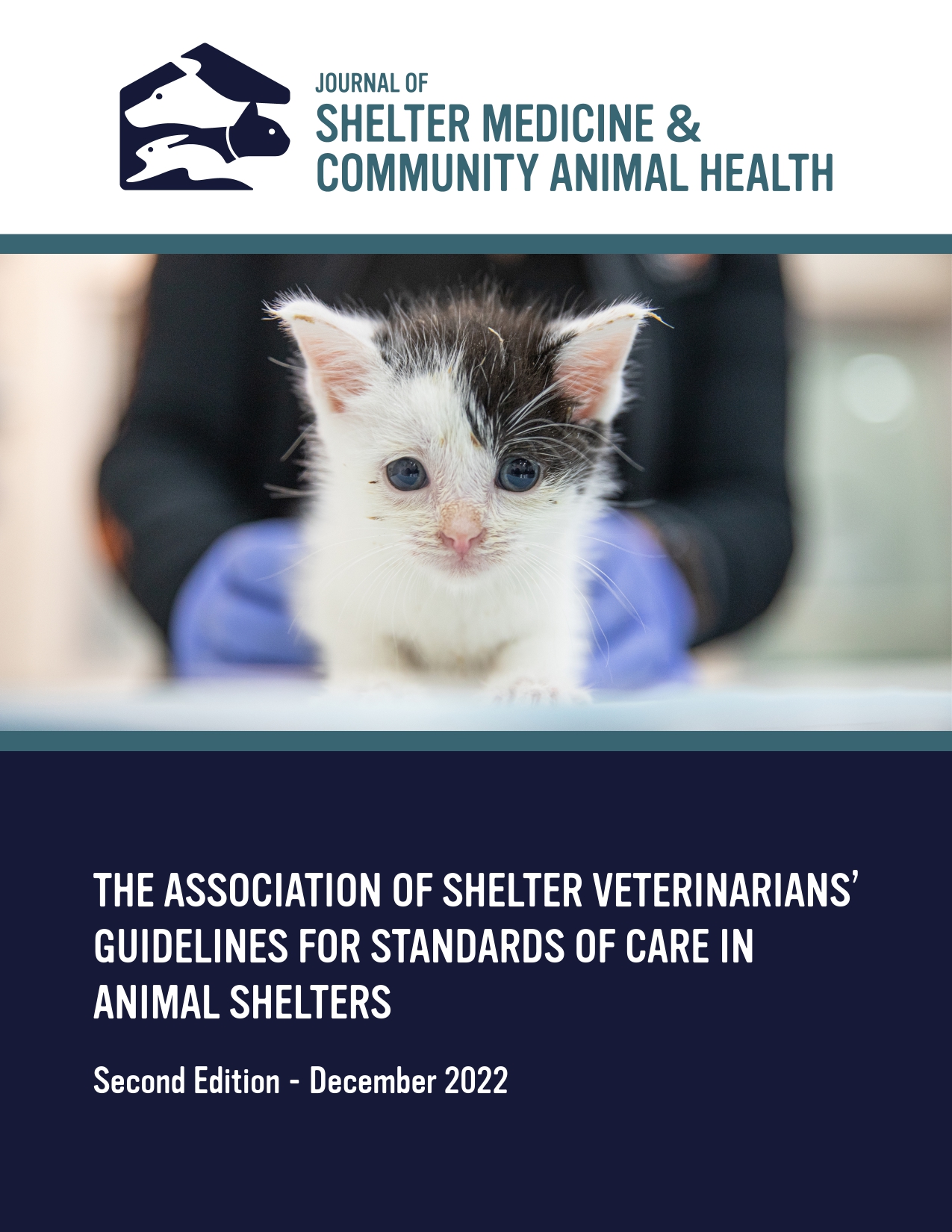Comparison of the Number of Dog Adoptions in a Pilot Program That Restored Limited Visitor Access to Kennels: A Community Case Report
DOI:
https://doi.org/10.56771/jsmcah.v3.85Keywords:
animal shelter, animal adoption, dog adoption, kennel, kennel access, kennel viewing, shelter visitor, adoption appointmentAbstract
In the 2020–2022 pandemic period, the Orange County (California) animal shelter used an appointment-based adoption system in which visitors did not have access to the kennels. In a 2023 pilot program, visitors were allowed to view some large dogs in their kennels for a limited portion of the shelter’s hours of operation. More adoptions than expected were observed during viewing hours compared to other days and times during the pilot period. Compared to the same calendar period in the preceding year, kennel viewing periods showed an 82% increase in adoptions while appointment-only periods showed only a 4% increase. A higher proportion of large dogs were adopted from the viewable kennels than from the general inventory of large dogs. This was not a randomized controlled study, and these estimates are based solely on retrospective comparisons. It is not known how these increased adoption levels scale if access is available to more kennels or for a substantial portion of the hours of operation.
Downloads
References
1. Protopopova A, Gunter L. Adoption and relinquishment interventions at the animal shelter: a review. Anim Welf. 2017;26(1):35–48. doi: 10.7120/09627286.26.1.035
2. Fantuzzi JM, Miller KA, Weiss E. Factors relevant to adoption of cats in an animal shelter. J Appl Anim Welf Sci. 2010;13(2):174–179. doi: 10.1080/10888700903583467
3. Bradley J, Rajendran S. Increasing adoption rates at animal shelters: a two-phase approach to predict length of stay and optimal shelter allocation. BMC Vet Res. 2021;17(1). doi: 10.1186/s12917-020-02728-2
4. Luescher AU, Tyson Medlock R. The effects of training and environmental alterations on adoption success of shelter dogs. Appl Anim Behav Sci. 2009;117(1–2):63–68. doi: 10.1016/j.applanim.2008.11.001
5. Gourkow N. 2001. Factors affecting the welfare and adoption rate of cats in an animal shelter. Master’s Thesis. University of British Columbia, British Columbia, Canada.
6. DeLeeuw JL. Animal shelter dogs: factors predicting adoption versus euthanasia. Dissertation. Wichita State University; 2010. http://hdl.handle.net/10057/3647. Accessed February 22, 2024.
7. Lepper M, Kass PH, Hart LA. Prediction of adoption versus euthanasia among dogs and cats in a California animal shelter. J Appl Anim Welf Sci. 2002;5(1):29–42. doi: 10.1207/s15327604jaws0501_3
8. Orange County Grand Jury. Gimme Shelter and a Pound of Advice; The State of Animal Welfare Overseen by the County of Orange. OC Grand Jury, California, June 2023. This reference is also provided as Supplementary Material.
9. R Core Team. R: a language and environment for statistical computing. Vienna, Austria: R Foundation for Statistical Computing; 2024. https://www.R-project.org/.

Additional Files
Published
Issue
Section
License
Copyright (c) 2024 Michael Loizos Mavrovouniotis

This work is licensed under a Creative Commons Attribution 4.0 International License.









